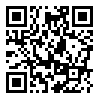Received: 2014/12/15 | Accepted: 2015/02/18 | Published: 2015/05/27
URL: http://ijwph.ir/article-1-463-en.html
BibTeX | RIS | EndNote | Medlars | ProCite | Reference Manager | RefWorks
Send citation to:
2- Orthotics & Prosthetics Department, Rehabilitation Sciences School, Iran University of Medical Sciences, Tehran, Iran
3- Janbazan Medical and Engineering Research Center (JMERC), Tehran, Iran ,
4- Emergency Department, Medical Faculty, Qazvin University of Medical Sciences, Qazvin, Iran
Aims: Children are more vulnerable to the risks of the landmines and unexploded ordnances. Due to the smaller organs and less resistance to the accident and trauma, the physical injuries in the children are more severe than adults. The aim of this study was to investigate the problems of upper and lower limbs and used orthotics and prosthetics in Iranian adolescent survivors of landmines and unexploded ordnances.
Materials & Methods: In this cross-sectional study, all (78 persons) less than 18 years old adolescents of 5 border provinces of Iran (West Azerbaijan, Kermanshah, Khuzestan, Ilam, and Kurdistan) that injured by landmines and unexploded ammunitions were studied in a health monitoring camp in December 2009 and January 2010. Demographic data were collected by a self-designed demographic questionnaire. Clinical examinations were done by orthopedic specialist and technical orthopedics. The statistical data analysis was done using SPSS 22 software by χ2 test.
Findings: The mean age of samples was 16.11±11.99 years, the mean height was 165.00±10.47cm and the mean weight was 54.25±12.74kg. 41 adolescents (52.56%) had amputation. 38 victims (48.71%) required prosthetics, 18 (23.1%) required orthotics and 8 (10.25%) required other assistive mobility devices. 21 victims (26.92%) were using assistive mobility devices 15 of them (71.42%) had satisfaction lower than the average.
Conclusions: The low level of satisfaction indicates the need of more attention to the education, health programs and rehabilitation for raising victims awareness and knowledge in the using of assistive mobility devices.








